– Welcome, everyone, to Wednesday Nite @ the Lab. I’m Tom Zinnen. I work here at the UW-Madison Biotechnology Center. I also work UW-Extension Cooperative Extension, and on behalf of those folks and our other co-organizers, Wisconsin Public Television, the Wisconsin Alumni Association, and the UW-Madison Science Alliance, thanks again for coming to Wednesday Nite @ the Lab. We do this every Wednesday night, 50 times a year. Tonight we get to hear about tornadoes. These are not tornadoes, but they are twisters and they are twisted.
The cool thing is 10 years ago today was a Wednesday and my son was born this morning. I got to come and do Wednesday Nite @ the Lab at that night. And this is his little toy. I thought it was very appropriate that we got to have both right-handed and left-handed tornadoes on hand here. And I’m going to ask you how come all our tornadoes in the Midwest go this way and hardly any of them go this way? Tonight, we are under a tornado warning here in… Dane County and other parts of southern and southwestern Wisconsin. No joke. It was really great coming to Wednesday Nite @ the Lab tonight to have Wisconsin Public Radio break in and tell us to seek shelter.
So, we have, tonight, Leigh Orf from the Cooperative Institute for Meteorological Satellite Studies. He was born in Springfield, Massachusetts, grew up and went to high school in Morris, Illinois, which is down on Route 47, and they would know nothing about major tornadoes storms. – Right. – It’s a very flat part of Illinois. He came up here to UW-Madison to get his bachelor’s and PhD in meteorology. Then he was on the faculty at University of North Carolina in Asheville and then at Central Michigan University. In 2015, he came back to be here at UW-Madison. Tonight he’s going to talk with us about supercomputer modeling of tornadoes. We probably lose more sleep to tornadoes than to other kinds of natural disasters in Wisconsin. I’m looking forward to seeing some of the scariest video I’ve ever seen on TV, or at least on the web. All through the simulations of his supercomputers. Please join me in welcoming Leigh Orf to Wednesday Nite @ the Lab. (applause)
– All right, let’s see if we can wake this thing up. There we go. Okay, well, thank you very much for the invitation, and I’m really happy to be here. I am going to talk to you about supercells and tornadoes. And I’ve got a whole bunch of cool video and stuff to show you, so we’ll just get right down to it. So when you’re asking a scientist what they do or why they do it, generally speaking you have some goals to try to better understand the physical world. In this case, I’m trying to understand a few things here, if I just sort of break it down. First of all, how do tornadoes form? We can watch them form when people have video cameras. We can take our Doppler radars and scan storms. But the processes that go on inside of storms that produce tornadoes are still not very well known.
So computer models are very useful tools to answer questions about things that go on inside of simulated thunderstorms, and that’s how I do this. Once a tornado forms, it’s like the balance of forces that keeps it going. This is an important thing as well. And finally, why do some supercell thunderstorms, like the one that was warned today, and it’s to our southwest. I don’t think it produced a tornado. We were issued a tornado warning for that part of the county, but I don’t think a tornado, I think it was seen on radar. This is called– Assuming I’m right, that would have been a false alarm. We issued a warning, but no tornado happened. And we tend to err on the side of safety, so we tend to issue warnings whenever we think there’s going to be a tornado, even if we haven’t seen one yet. And this is a problem because, if you’re like me, you’re like, well, I heard the sirens go off four other times and there’s no tornado, why should I listen to this one? Well, the fifth one’s a tornado, so you have to be careful.
We’re trying, we’re working on this, but it’s a real challenging problem. So, really, why do some supercells produce long-lived devastating tornadoes while most others don’t? And we don’t know yet. We have some ideas, and this research really aims to take a computational approach to answer that question. So my process, how do I attack this problem? I have been very interested in using computers to solve physical problems since I was in high school. I was in high school in the ’80s. Computers weren’t so big and powerful, but I already saw that you could do some very interesting things with computers. Once I realized you could program them to simulate physical things, I was hooked because I liked weather and I liked computers, so I thought, hey, why not use them both? So I’m simulating a storm, growing it in a virtual lab you might say, and just seeing what happens. When I run a simulation, I don’t know if it’s going to produce a tornado or not. And I’m only showing you the ones that produced tornadoes, but I want to be clear about that.
Like the real weather, it’s hard to predict whether the tornado is going to form in even the simulated storm. And that’s probably good. It means our model is behaving a bit like the real atmosphere in that it doesn’t always produce tornadoes. So it was a real challenge to get this work to even happen. To get the tornado to even form. It took a lot of getting things to work on these very powerful supercomputers that are not exactly user-friendly. So I’m at this stage in the– I’m burning as much computer time as I can to create as many tornadoes as I can so I can study them. You’ll I’ve done a lot of work visualizing and animating, putting the motions so we human beings can understand what’s going on better. We’re just starting to get to the quantitative analysis part. That means when you get into the real numbers, not just movies. And then, of course, we also want to always compare our results to observed storms because the real atmosphere is really guiding us on this.
Why do we study these types of storms? They’re the least common but most devastating. So most supercells, about one in four to one in five supercells produce a tornado. And most tornadoes are short-lived and not very damaging. Very few tornadoes produce the kind of damage you saw like i Okay, so this one is kind of fun too. What I’m doing here is– This is actually precipitation. I’ve just colored it in psychedelic colors just to entertain you. Well, no, actually not. The colors indicate the speed, whether the wind is going up or down. Rain that’s falling, the rain can fall through the air. You can have rain falling through the air where the air is going up. You see what I’m saying?
Air, you know, think of a large raindrop. I might fall at, say, 30 miles an hour. But if it’s in an updraft going up 20 miles an hour, it’s going to fall at 10 miles an hour. So you can have rain that’s falling up, and there is rain falling up here. But anyway, remember the earlier sequence I showed you that showed that rain kind of coming in and forming that little tail cloud? Well, this is precipitation. And I see a similar feature. So here you have this precipitation that’s falling, and it’s not falling very fast. It’s probably like small drizzle droplets, and it’s actually being pulled up into the storm. And that’s where you see our tail cloud form. And I’ve seen this in more footage and I’m starting to think there might be something going on here.
So you have rain falling up. Ah! Crazy. If you get a strong enough updraft, you can lift it up. In fact, that’s why hailstones get so big because hailstones can fall, say, 100, maybe 80 miles an hour but you can have an updraft that’s 90 miles an hour. In fact, the hail formed because it was suspended in the air for so long. Now here’s vorticity. Vorticity is the measure of spin and shear. But the thing I want you to realize is this is the magnitude of vorticity, and I’m shading it by the vertical components so that when you see red, that’s cyclonic or counterclockwise. So this is, like, the heart of the mesocyclone. It’s rotating this way. And when you see blue tubes, those are anti-cyclonic. So, yes, there are a lot of anti-cyclonic tubes or vortices in this simulation.
At some point, I blessed this thing and called it the streamwise vorticity current. I’m sort of joking, but this is the feature we’ve found that seems to be important. You’ll notice as I change the view in a second, this thing kind of wraps up around the tornado but is not intersected. And there’s a tornado. It formed. So, somewhere in that movie is the solution to tornadoes. Well, maybe not. So I’m continuing to go. There’s our super strong updraft. There’s our streamwise vorticity current that’s bringing this air up and around. And there’s our tornado. Look at that, it actually lifts a vortex almost off the ground and then turns it erect, and then it kind of, look what it does to it.
See, the blues guys are rotating the opposite direction of the red guys, and they don’t interact very well. They’re like pointing two magnets, north poles to each other. They sort of fight against one another. But when you have red guys coming in, they just get assimilated into the circulation of a tornado. So that’s interesting as well. So this, what you’re seeing here, no one’s really, this is like the first time anyone’s managed to do this with this kind of fidelity and this kind of, showing it in this kind of form. And I’ve even managed to go to higher resolution. I’m going to share some of that with you shortly. But, there’s a story to be told here. I need a fleet of grad students to dive into this data, and they’ll be happy for a long time because we have tons of data to analyze.
And, in fact, I’m in the process of generating more data. And isn’t it interesting how in the rear flank of the storm it kicks in a bunch of I call of phosphorescent spaghetti. But, essentially, it’s very turbulent in the rear flank where you have all these pulsing downdrafts. So where you see this blue and red mass, it’s just turbulence. It’s just air that’s kind of going off in all sorts of different directions. But sometimes those turbulent eddies and that turbulence forms these vortices, and there’s another blue guy who’s going to get swept around the red guy. So, yeah, it’s pretty cool. You can start to see it’s getting eroded a little bit as this downdraft air starts to get ingrained in there. But it goes and goes. And these features here that I think are important, we need to find them in nature.
And that is going to be a challenge because this is, if you’re actually, the storm is coming right for us in the room from this direction. It’s coming to the northeast. And if you want to study this region, you better deploy your instruments and get the heck out of the way because it’s coming right for us. But I’m very serious when I say this is a region of the storm that we need to study harder to see if what this model is telling us is out there in nature. And I want to also stress the fact that I’ve studied one environment. For all these simulations, it’s like one storm being simulated in different ways. I’m really interested at looking at several environments, not just one storm, so that we can start to draw more general conclusions because I want to be clear. I don’t want to make any grand conclusions about this simulation because it’s just one environment.
At this point, things have gotten all rainy and the storm is getting weaker. Here’s a still image to give our eyes a rest for a few minutes. This is just at the point where the tornado is forming. This is that sort of upward, the horizontal vorticity that gets tilted into the vertical that we’re giving a name, the SVC. This little vortex right here is going to become a tornado. This is actually an anti-cyclonic vortex. And you see all these other guys here? Some of them are spinning one way and some of them are spinning another way. Most of them are spinning cyclonically, and they help to form a tornado. But you see a lot of vortices that are anti-cyclonic.
So, again, the red guys are cyclonic, going this way. Cyclonic, cyclonic, cyclonic. Okay, that’s good. These three sort of merged into a tornado. Here’s a tornado looking stronger. Here’s an anti-cyclonic vortex. So it’s rotating this way. So you have one rotating this way, one rotating that way. And this guy gets sort of lifted up a tornado like we’ve seen before. But this is something that surprised me. There’s a whole lot of rotation going on at different scales. Here we go again. That vortex I just showed you got lifted and tilted. Now it’s a horizontally-oriented vortex. It looks like a hairpin. There’s a vortex going through that one. It’s like all twisted up. It’s so cool.
Same kind of thing going on. Anti-cyclonic, anti-cyclonic, cyclonic, cyclonic. And then more phosphorescent spaghetti. So a lot of turbulent action going on. How much is of that is important and how much of it is just happening? Well, we don’t know yet. We really only started looking at these simulations at this kind of resolution recently. So here I’m just going to let some air parcels go and watch where the air goes. Just drop parcels near the ground. And immediately you can see both the tornado and the streamwise vorticity current. So this is, I’m just letting parcels go from near the surface. Like everyone throws up a big beach ball every two seconds, only the beach ball is completely negatively buoyant. And boof, boof, boof, watch the beach balls go.
So this is our SVC. This is our tornado. This is the gust front, the rear flank gust front. It all kind of shows up, and I’ve shaded it by speed. The air is moving faster here than it is here, for instance, but it’s moving really fast in the tornado, as you might expect. So all these different ways of looking at the same thing. This is that streamwise vorticity current thing if you’re looking at radar. Here’s your hook echo. You’d expect it to be sort of streaming in from the north sort of and wrapping around. Again, this is something that if we’re going to find, we’re going to have to look pretty hard for it.
Here’s a figure that kind of shows there’s that SVC thing. These are just parcels being let. Notice as it’s rotating as it goes. Here’s our tornado, and we’ll just kind of go up the tornado and watch. This thing is rotating, but also the path is rotating. So it’s really kind of cool. The path of this thing is a helix, but it’s moving in a helical direction. So it’s moving helically, but it’s also shaped like a helix. It’s like rotation all the way down. But this is an interesting feature. Basically, the storm is organizing vorticity in an interesting way that I think is helping to make it stronger.
And this is something that– This is where we’re going with this. Here’s a really cool sequence. This is the best rendering of a thunderstorm I’ve seen by David Bach at NCSA, one of the folks I’ve collaborated with. There’s the model grid. We’re going to plop the storm down. This is just a cloud field so there’s no rain in this. But David has done a very good job of using shadows and such to make it look really spiffy. There’s the overshooting thunderstorm top, mammatus clouds, and we let this go for about 800 seconds. There’s our tornado on the ground. We’re going about 30 times real time. 60 times real time.
And you can see that explosive growth you would see with the time lapse of the supercell. And, like I said, this is very, very nice rendering. So David took my data and made it look really good. Here’s the streamwise vorticity current thing. I’m just releasing air parcels, letting them go, and seeing where they end up. Notice how they rotate. They’re rotating horizontally and then they turn upwards and now they’re rotating vertically. And tornadoes are all about vertical rotation, right? Rotation about a vertical axis. Here you have rotation about a horizontal axis that then becomes tilted into the vertical, and that’s important. That’s an important process in this simulation and probably in real storms as well.
So, yeah, you know, sometimes you can’t even see the tornado. It’s wrapped up in this mess of turbulence that sort of squirted out from the rear flank of the storm. More parcels. So here I’m releasing them in different parts of the storm to see where it’s going. So here is that forward flank region of the storm. That’s the streamwise vorticity current in red. The green is in the cold pool air, and it seems to go straight into the tornado at the bottom. The yellow is similar. The blue, the light blue is in rear flank of the storm, and it seems to take a more circuitous path and doesn’t necessarily get right into a tornado. But looking at this really slowly, you can see the very sharp turn upwards and around, you know, the SVC is going like that upwards. And over here, the greens are just going, taking a very sharp turn right at the tornado base and getting into a tornado.
So we’re going to be looking at where the air is coming from, where it’s going, what are the properties of the air, what modulates the properties of the air. All the different things we can do. Like I said, a fleet of grad students for a long time. Lots of stuff we can look at. And onward and onward. Yeah, so this is the 30-meter simulation I’ve been sharing with you. This is the research we’ve published. We’ve already done more simulations. In fact, some of the stuff I’m going to show you at the end of this talk has been seen by nobody else but one of my collaborators. You’ll be the first to see it. I just rendered the frames yesterday.
Here is a tornado again releasing air parcels. Notice, remember when I said that there’s a downdraft in the center of a tornado? Well, the air is getting caught in that downdraft and then immediately recirculating upwards. And you can see that. I’m just letting parcels go a kilometer-and-a-half above the ground, and they get caught in the downdraft but they make a really nice tracer for the tornado. I think it’s a really cool, really cool way to visualize a tornado, I think. Okay, for this next sequence that I’m going to share with you, blue is downdraft and this sort of green/gold color is updraft. And this is going to show you the tornado dying, and this is radar reflectivity at the surface. So towards the end of the simulation, the white tube is the tornado. It’s the vorticity at the surface. You’ll see the tornado is doing okay. You can see it all the way up into the cloud.
But watch all this blue sort of just kind of circle the tornado. You’ll see it get really blue here. And yes it’s raining heavily, but I think there’s some other things going on. And, boom, the tornado is gone. Really, it gets stomped by that downdraft, and it really ends quite abruptly in this simulation. Not all of our simulations have that, but that one does. Okay, so we talked about the 30-meter simulation, now I’m going to go to a 20-meter simulation. So this is higher resolution, more grid cubes, so you’d expect to see more detail, maybe better-looking clouds. The simulation has gone on quite a bit to this point, but at the time I started rendering frames, this is an anti-cyclonic tornado. And you’ll see it kind of goes away and then, boom, there is that one.
And I see this in some of my simulations where the anti-cyclonic tornado weakens and that one strengthens. Like a see-saw kind of a thing going on. And I’m still trying to figure that out. Here’s that precipitation off to the right, streaming inward. You don’t see it as clearly as before, but one of the nice things I like about this rendering is you can see the individual vortices inside the tornado. So this is multiple vortex tornado. We think that most strong tornadoes especially have multiple vortices in them, so you can see them in there. You can see clear air between those cloud, those tubes of cloud, which is what the vortices look like. Now I’m going to slow it down a little bit and zoom in. And I’m also going to compare it to a guy who got stuck on the side of I-39 for the– It was in 2014, Illinois. I can’t think of the– Fairdale. Fairdale, yeah. You’ve probably seen this video if you’re a tornado freak.
So this guy is on I-39. This thing is coming basically right across the street this way. The reason I show this, and yes, he was okay, is that you can see, if you look carefully, you’ll see little breaks between the vortices where you can see the sky behind it. And that’s just kind of showing you that– There’s one, there’s, you’re seeing multiple vortices here and here. So in other words, when I see this looking like that, I’m like this is probably, we’re probably on the right track here. But we always have to look to Mother Nature when we do this theoretical work, okay? We have to validate our data. Here I’m doing vorticity again, blue guys and red guys. So the blue guy sort of fizzles out, and here comes this screaming red guy. And I use a different threshold here to show you just the tornado. But I’ll slow it down a little.
But notice how it’s like two different vortices wrapped around each other, spinning around. So each one of these is a little tornado sort of. The are really rapidly rotating air, and then they’re sort of dancing around each other. And, you know, when you hear about tornadoes hitting your region and one house gets obliterated and the house across the street doesn’t, it’s because you’ve got these tiny little vortices, and it’s almost random. It’s chaotic. Okay? So that’s the reason why, I think, sometimes you see almost random damage when it comes to like populated areas. This is also looking at spin vorticity. And I’m going kind of fast here, but I’ll slow it down. But, you know, lots of action.
I’ve seen actual radar data that looks a lot like this from the May 31, 2013, El Reno, Oklahoma, tornado that actually managed to kill some professional storm chasers. They were caught unaware of the fact that they were in a two-and-a-half-mile wide tornado. And one of the multiple vortices came down and it hit their car. But this kind of sort of random chaotic looking stuff, we’ve seen this in the field. We’re pretty sure that this is not something that is just happening in models, okay? So this kind of activity where you have all these multiple vortices, these are all spinning cyclonically. Oh, that one’s anti-cyclonic. So you occasionally get some that are spinning in the other direction, but they’re short-lived. Okay, so I just ran this simulation a few days ago. Just got the data and I just rendered some frames, and some of them are ready for this talk. And I did this on purpose. I wanted to get this ready for you guys. So nobody else has seen this.
This is 15-meter. I can say with pretty good certainty, that nobody else has done a simulation at this scale of a thunderstorm. I don’t think so. This is like almost 20 billion grid points at 15 meters. Again, the sky is anti-cyclonic where I happen to start, but look at the tail cloud region and how much more realistic it looks. You’re starting to see convective elements. The blue is just where the cold air is. The boundary between the cold air and the air ahead of it. But I’ll let this go. But this is pretty exciting. And you can see the explosive upward growth. You can see these elements kind of going up. And you see that in the field all the time when you look at the base of the storm.
So yes, we get a tornado. It’s cyclonic. It’s EF5. It’s very strong. You see the same kind of things with these sporadic downdrafts in the rear flank of the rain. You’ll see rain coming around to wrap it. But notice how messier and sort of more detailed things are. As you go to higher resolution, you start to resolve things more and you start to see more of that detail. And you can see there’s an interesting boundary between cold air and warmer air over here. We didn’t see that boundary over here in the 30-meter simulation. It was over here somewhere.
So I think one of the results of increasing the resolution is it changes the structure of the cold pool just a little bit. Again, we’ve got a lot of work to do to unpack all this. But it goes, oh, hello, what are you? [laughter] Hello, there. Let’s dance. Whoo. And this is cool. I mean, really. I’ve never seen anything like this. So that was an anti-cyclonic. It came and went. That’s cyclonic again. And the simulation stopped right here. So I’ve got the rest of the simulation sitting on a supercomputer ready to go. I just need to get it going again. So we haven’t finished that one yet. We don’t know how the story ends.
And here is that vorticity thing again. Now, like I said, there’s so much detail here you probably can’t see it all very well. But this is that same streamwise vorticity current air. You’re going to see the air kind of come up and around. There is your anti-cyclonic blue guy, and the tornado hasn’t formed yet. So red is cyclonic, blue anti, and gray is horizontal. So if it’s rolling like parallel to the ground. And I’ll run this a couple times. But, yeah, I look at this and I can just put this on my computer screen and watch it all day, basically.
And there’s your tornado, so, what I see is well– It seems like there’s this wrap around thing that happens a lot before a tornado really forms. It’s like something kind of back here just gets strong enough. It just kind of encircles the region that’s sort of trying to form a tornado, and then, boom, that is completely just, based upon my observations of this. Right when you see this kind of come around, that’s when it seems the tornado forms. So we’ve got a lot to do, but the fact that we actually did this is a big deal because it’s just really hard to get, to wrestle a supercomputer into submission, basically, and get it to do this. It’s really hard. I can’t tell you how many times I failed at this before I got success. Now you can really see the SVC. See how it’s horizontally rotating? And then it gets tilted upwards.
This is a really nice way to show that. Yes, it’s a turbulent mess, but it’s still, there’s overall, I’ll slow it down a little bit here. You can see how the rotation is basically this way, and then it gets tilted this way. And that helps to drive the storm. There’s physical reasons why I say that. When you have this kind of rotating element, it drops the pressure a little bit, which can help to do some other things that help to maintain it. There’s definitely some positive feedbacks in the simulation that helped this happen. But that’s, yeah, like I said, I looked at this for the first time yesterday. I just made this movie yesterday. So you’re seeing it, no one else has seen this before except for my collaborators.
So, all right. Parting thoughts. If you’re not seasick from watching all that. [laughter] Okay, so the first thing is yeah, we can do this now. And this is something that has– I am by far not the first person to try to do this sort of thing. We’ve had people doing cloud modeling like this since the late 1970s. The pioneers of cloud modeling, some of them were here at the University of Wisconsin actually. Robert Schlesinger in the Department of Meteorology was one of the first meteorologists to simulate a supercell in three dimensions. Robert Wilhelmson at the University of Illinois, who’s also one of my collaborators, he also made a model that was three dimensional, and we learned so much about supercells. So I’m doing the same basic thing those guys started way long time ago, only to the tenth power.
We’re using a more refined model that has better physics, better numerics. We’re exploiting new computers. In the ’70s, you know, your cellphone in your pocket had more power than a supercomputer in the late ’70s. I’m not kidding. It’s true. So you can imagine the simulations have gotten more realistic as time has gone on. But we can now simulate supercells that produce tornadoes “naturally.” You don’t have to kick it. We don’t have to use a little chamber model like you see at museums sometimes. Those simulations have been done for a long time. We’ve got the whole storm, all the messiness involved in a full storm, and the tornado happens. The fact that it happens means the model
is probably doing the right thing.
And you’ll notice I have all this sort of conservative language or I’m very well holding back on making any grandiose conclusions because that’s the nature of science. When you’re, you know, doing something that’s kind of new, you want to make sure it’s been vetted. Yes, we’ve published data, published some of this work, but there’s a lot coming out and I can’t keep up so fast. I can’t publish it all right away, so we’re still pawing through it. But we can do this now. This is exciting. But we can do it in the model, but this SVC thing and some of the other things we’ve identified, do they exist in nature? Probably they do. We haven’t looked for them because we didn’t know what to look for, and it turns out the SVC is going to be hard to find using things like radar because it’s just because of the nature of it.
So, you know, I’ve been talking to some researchers who are thinking of sending probes into supercells. Remember that movie that will go unnamed at this point? Maybe it was, you know, it was way ahead of its time. Miniaturization has gotten to the point now where you could deploy little instruments that measure things. But there’s still a lot of things to work out. But how are we going to sample that part of the storm? That’s a good question. So, do they exist? I hope so. You know, because I’m a numerical meteorologist, I study these things. I rely on my colleagues to go out and find the things.
It often goes the other way. Sometimes you’ll observe something and then you have to model it. In this case, we modeled something and now we want to go observe it. So there’s this nice give and take in our field where you have the theoretical, the modeling, and the observational, and they all help to move the field forward. So, as I go on, I will simulate different storm environments. So not just this El Reno environment. I will try to run at higher resolutions, try to tweak storms to get them to not form tornadoes so I can compare to the ones that do and figure out what didn’t happen in the storm that didn’t produce the tornado. That’s really important scientifically because maybe we can see something on radar for instance. Maybe, for instance, in 10 years we wouldn’t have gotten a tornado warning for a tornado that didn’t happen to our southwest, assuming it didn’t happen.
Watch, it’ll turn out 50 people died and they’re all children. Ah! No. Anyway, I don’t think that tornado produced. I don’t think there was a tornado; I think it was rotation on radar. But my point is, wouldn’t it be nice if, when you heard a tornado warning, there was an actual tornado, and you really should take shelter? And that’s where we want to go. The end game of a lot of research in thunderstorms and tornadoes is that we can better warn the public to get out of their way, to get to your safe space because all the kidding around you want to do about going to the roof or chasing storms, I mean, people do die. And we don’t want that. So, with that, I will be happy to take any questions, and I do post a lot of my talks and stuff on my website. If you want to slow things down and hit pause, you can go to that Orf.media, and this talk will also show up on there and it will also be on the bio sci webpage as well. So, thank you very much for your time. [applause]
Search University Place Episodes
Related Stories from PBS Wisconsin's Blog

Donate to sign up. Activate and sign in to Passport. It's that easy to help PBS Wisconsin serve your community through media that educates, inspires, and entertains.
Make your membership gift today
Only for new users: Activate Passport using your code or email address
Already a member?
Look up my account
Need some help? Go to FAQ or visit PBS Passport Help
Need help accessing PBS Wisconsin anywhere?

Online Access | Platform & Device Access | Cable or Satellite Access | Over-The-Air Access
Visit Access Guide
Need help accessing PBS Wisconsin anywhere?

Visit Our
Live TV Access Guide
Online AccessPlatform & Device Access
Cable or Satellite Access
Over-The-Air Access
Visit Access Guide
 Passport
Passport
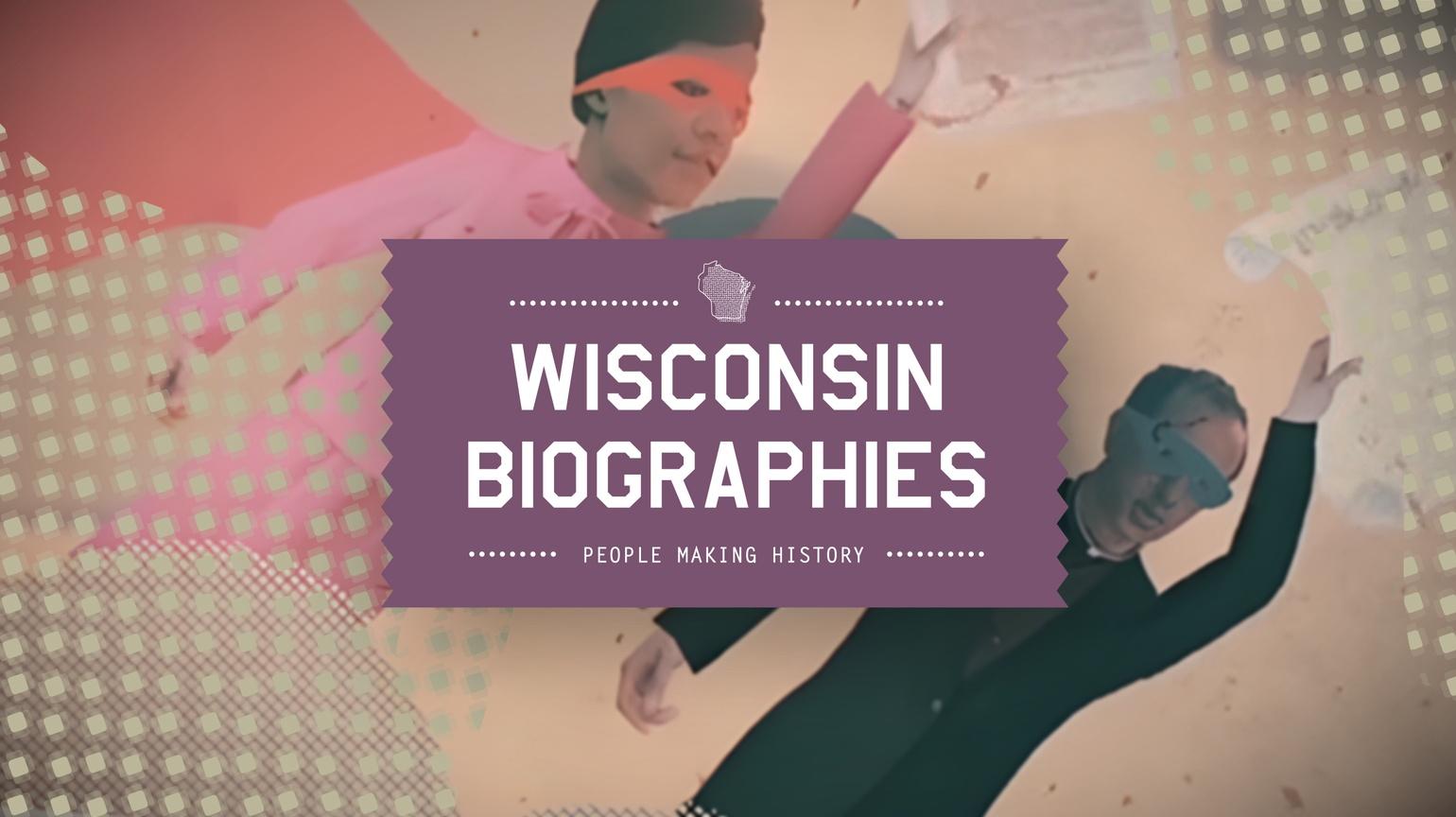


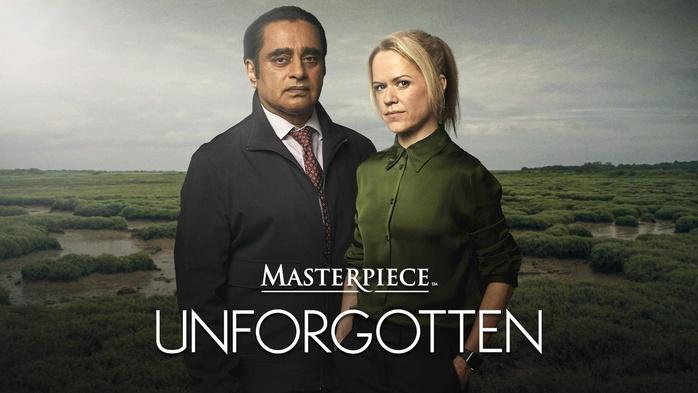



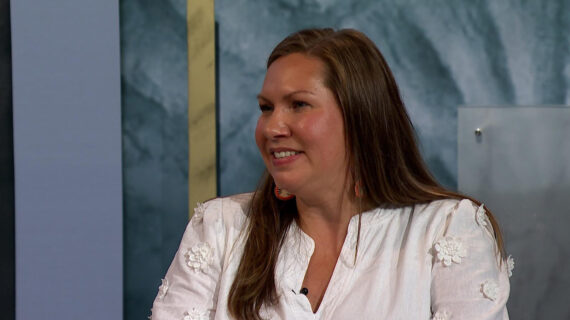

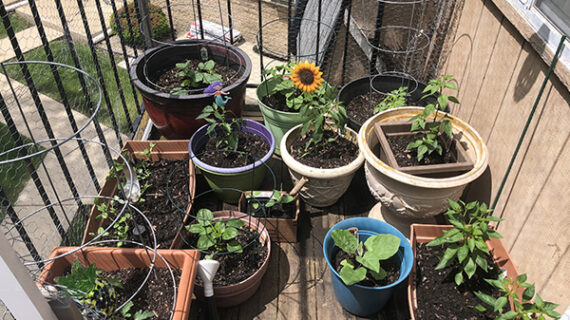
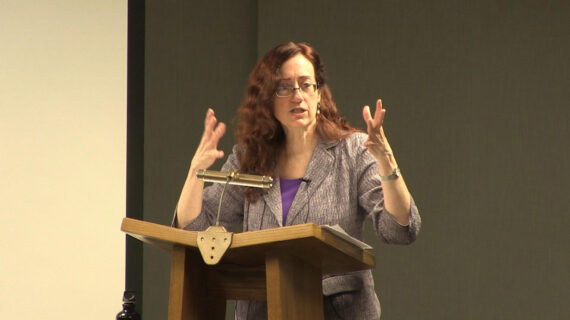
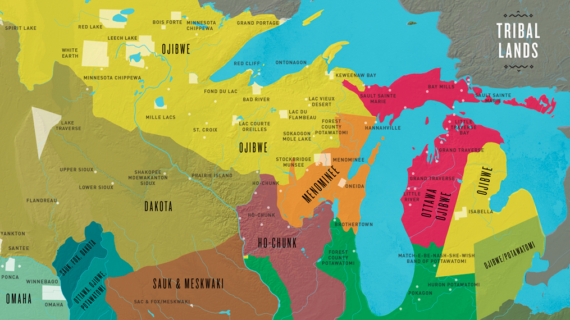


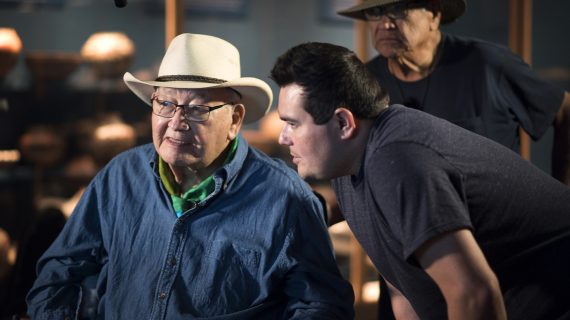



Follow Us